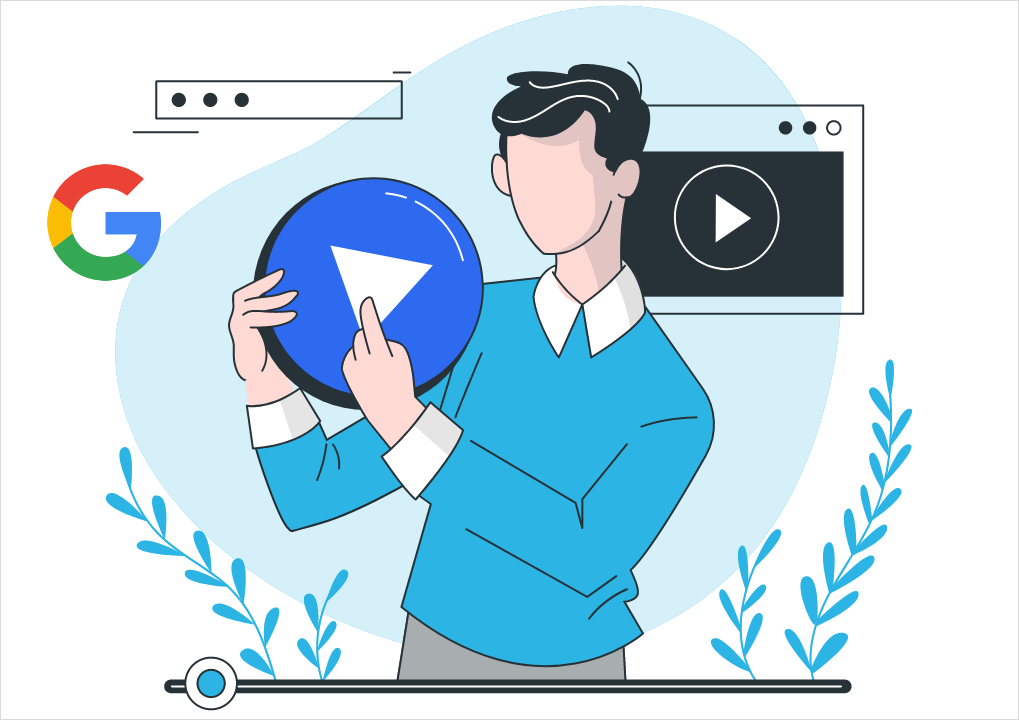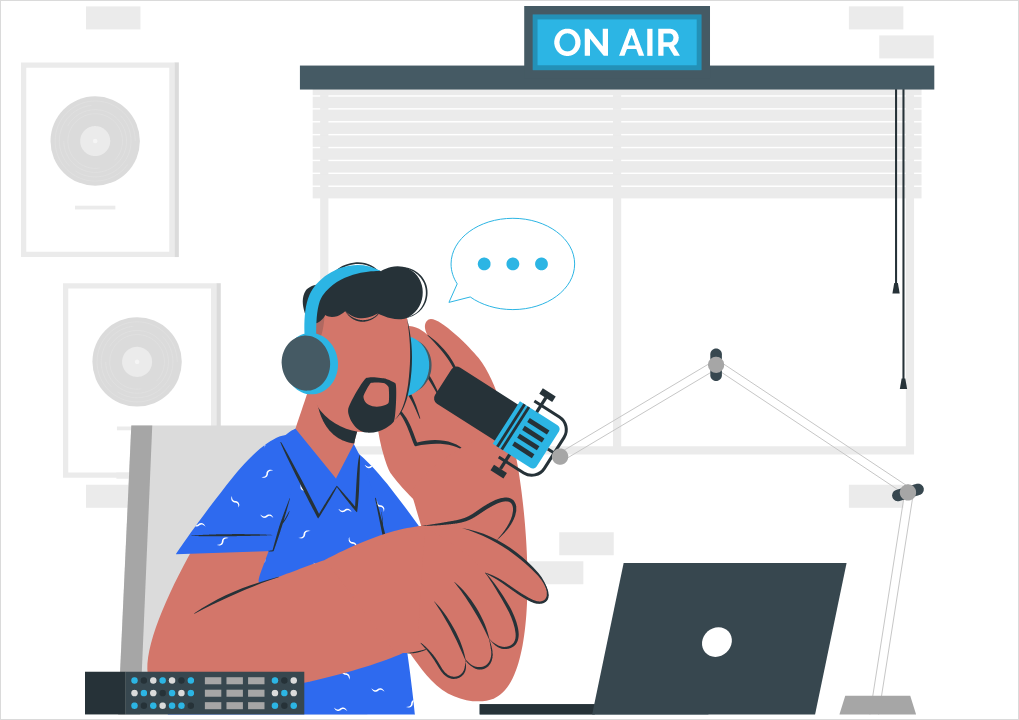Imagine you’re sipping your morning coffee and watching a delightful YouTube video, only to be interrupted by an unexpected ad. It’s not a new phenomenon; we’ve all been there. Google, the tech giant behind YouTube, has made a change that might seem subtle but has left some advertisers scratching their heads.
The company recently announced that it removed the term “in-stream” from one of its video ad formats. So, what’s the big deal? Let’s dive into the story and understand why this seemingly minor change raises some eyebrows.
A Shift in Terminology: “In-Stream” Becomes “Skippable”
In a recent blog post that found its way into buyers’ inboxes, Google revealed that its once-familiar “In-Stream Ads” would now go by “Skippable Ads.” According to Google, the change was primarily made to provide a more accurate description of the ad format. Seems reasonable, right? But as the saying goes, the devil is in the details.
Google clarified that this change wouldn’t impact how campaigns are managed or run. Instead, it’s an attempt to simplify the naming conventions across different ad formats. Not all ad formats that feature in-stream placements are labeled “in-stream.” This naming confusion prompted Google to opt for a more straightforward nomenclature. But, as is often the case in advertising, things are never as clear as they seem.
Trust and Transparency: The Underlying Issue
At the heart of this renaming lies a bigger issue: trust. Advertisers are growing increasingly skeptical about the inventory that Google offers. There have been allegations that Google’s in-stream video placements are not as reliable as they claim.
A research firm, Adalytics, accused YouTube of misleading buyers by selling them out-stream video placements while assuring them that their ads would only appear in in-stream formats. Google has denied these allegations, but the shadow of doubt lingers.
Decoding the Difference: In-Stream vs Out-Stream Ads
To truly comprehend the implications of this name change, it’s essential to understand the distinction between in-stream and out-stream ads. In-stream ads are the ones that pop up while you’re watching a video. They’re like the commercials you see on TV, sandwiched between your favorite shows. Out-stream ads, on the other hand, are a bit sneakier. They appear in your feed or as a small, muted video player within an article. They’re not directly related to the content you’re consuming, and that’s where the issue lies.
According to Adalytics’ findings, many ads aired on Google’s Video Partner network fell into the out-stream category. This misalignment between what advertisers expected and what they received sparked concerns among buyers. The name change, “Skippable Ads,” only exacerbated these worries. Some buyers were uncertain whether this change would guarantee their ads’ exclusivity to in-stream placements.
The Buyer’s Frustration: Seeking Reassurance
One frustrated media buyer commented, “I think it’s dishonest… Were you not accurately representing [skippable ad formats] before?” This sentiment echoes the concerns of many advertisers who feel misled and let down by these unexpected twists. It’s a classic case of buyer beware, but this situation raises pertinent questions in an era where transparency and accountability are paramount.
Interestingly, YouTube’s stance is that the name change was unrelated to the Adalytics report and won’t impact campaign controls or reporting. They emphasize that the ad inventory referred to in the name change only runs in-stream. But these assurances might not be enough to quell the rising tide of dissatisfaction among advertisers.
The Industry’s Ongoing Debate: In-Stream Clarity
The debate between out-stream and in-stream isn’t new. Even before the Adalytics report, the advertising industry grappled with what constitutes in-stream video. The Interactive Advertising Bureau (IAB) tried to clarify this by releasing new standards. These standards aimed to define what types of online video could be classified as in-stream. However, implementing these standards has proven to be a gradual process.
Ed McElvain, Executive Vice President at Mediahub, notes that YouTube must carefully label its inventory. The company might inadvertently sell a video ad slot that a publisher classifies as in-stream according to an old definition that no longer holds. It underscores the complexity of the advertising landscape and the challenge of maintaining consistency across platforms.
The Trust Quandary: Advertisers’ Dilemma
As the dust settles on this naming convention change, the larger question remains: Can advertisers truly trust the platforms they invest in? The renaming of “In-Stream Ads” to “Skippable Ads” might seem like a mere linguistic alteration, but it reflects a deeper issue of transparency, accountability, and aligning expectations. The media buying landscape is evolving, and advertisers, platforms, and tech giants like Google must work together to establish a trustworthy foundation for all parties involved.
In a world where attention spans are shorter than ever and competition for eyeballs is fierce, advertising has become an art of balance. Advertisers aim to capture audiences’ attention without alienating them with intrusive interruptions. Google’s renaming of “In-Stream Ads” to “Skippable Ads” is a reminder that this balance isn’t just about creative content; it’s also about trust and transparency in the advertising ecosystem.
Motivations and Implications: Decoding Google’s Move
One can’t help but ponder the motivations behind Google’s move. Was it truly just about simplifying naming conventions? Or was it a response to the growing concerns raised by the Adalytics report? While Google maintains that the report didn’t prompt the name change, ignoring the timing is hard. It’s a lesson in the delicate dance that platforms and advertisers engage in – the dance of perception vs reality.
The Essence of Advertiser Expectations
The heart of the matter lies in how advertisers perceive their ad placements. Advertisers invest significant resources into creating compelling content that resonates with their target audience. They want their ads to appear in a context that aligns with their brand image and messaging. This is where the distinction between in-stream and out-stream becomes crucial.
Advertisers who purchase ad inventory on YouTube expect their ads to be displayed alongside relevant video content – true in-stream placements. They want their messages to be seamlessly integrated into the viewer’s experience. Out-stream placements, where ads appear as standalone entities within articles or feeds, don’t offer the same level of integration and relevance.
The fear among advertisers is that their meticulously crafted ads could end up in out-stream placements, divorced from the content they were meant to enhance. The name change to “Skippable Ads” brings this fear to the forefront. Advertisers worry that this shift in nomenclature might indicate a broader shift in how YouTube handles ad placements. The concern isn’t just about the name; it’s about the implications that name change might carry.
Bridging the Trust Gap: Toward Transparency
Furthermore, the Adalytics report highlighted a misalignment between what advertisers were promised and what they received. This misalignment erodes trust; in an industry where relationships are paramount, that’s a significant blow. The fact that a class-action lawsuit has been filed against Google, as a result, speaks volumes about the gravity of the situation.
The question then arises: How can this situation be remedied? One approach is for platforms like Google to engage with advertisers proactively. A clear and open dialogue about how ad placements are managed, labeled, and tracked can go a long way in building trust. Transparency might not be easy, especially when the lines between different ad formats are blurred, but it’s an essential step forward.
Forging Industry Consensus: The Role of Standardization
Standardization across the industry is crucial. The IAB’s efforts to define in-stream and out-stream standards are commendable, but adoption takes time with any change. Advertisers, platforms, and industry bodies must work hand in hand to ensure that these standards are not only defined but also effectively communicated and enforced.
Striking a Balance: Google’s Responsibility
Companies like Google hold significant responsibility in a landscape where perception can become a reality. The name change incident serves as a reminder that a brand’s reputation is fragile and can be tarnished by even the smallest misstep. However, it’s also an opportunity for growth and improvement. By acknowledging concerns and proactively addressing them, Google can reaffirm its commitment to its advertising partners.
Embracing Change: The Unfolding Advertising Landscape
As advertisers navigate this ever-evolving landscape, one thing is certain: change is the only constant. The advertising industry will continue to adapt, redefine, and reevaluate its strategies, formats, and practices. The key is approaching these changes with a balanced perspective, mindful of both creative aspirations and ethical responsibilities.
Wrapping Up
Ultimately, the story of Google’s “Skippable Ads” name change is a microcosm of the advertising world’s larger challenges and opportunities. It’s a reminder that every choice made by advertisers and platforms alike has a ripple effect beyond mere words. The evolution of advertising hinges on building a symbiotic relationship between trust, innovation, and accountability. This relationship benefits the stakeholders and the audiences they seek to engage.






